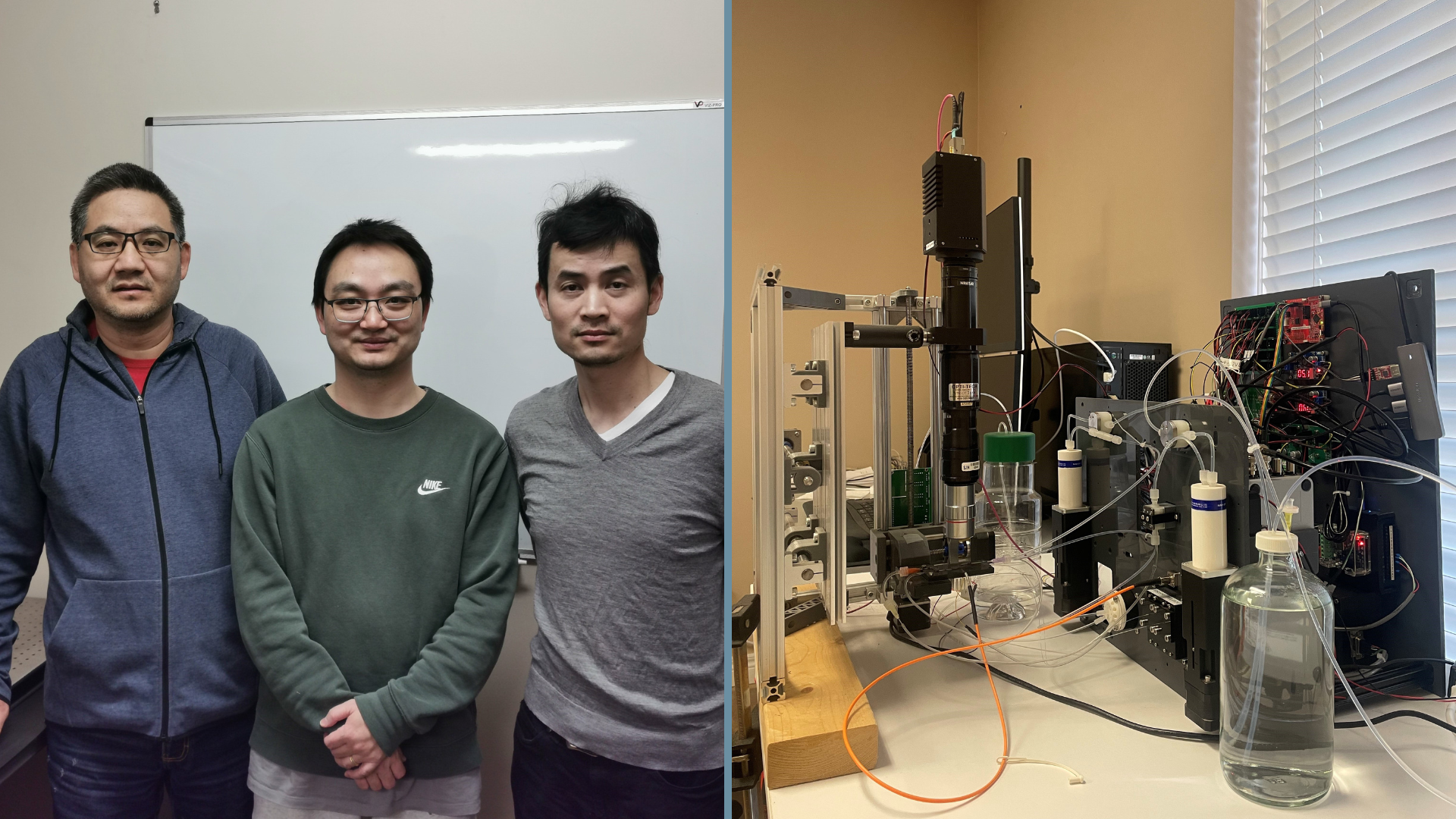With support from the Ontario Water Consortium’s Water Industry Growth Program, Forsee Instruments is advancing environmental monitoring with its innovative technology for detecting and identifying algae and cyanobacteria in water sources.
Each summer, algae and cyanobacteria blooms are a common sight in lakes across Canada — and a common headache for water treatment plants that rely on surface water sources.
Those films or mats can clog intake pipes. They create foul smells and tastes. And in the case of some types of cyanobacteria, they can contain toxins that are dangerous to drink, causing nausea, vomiting and diarrhea. At high concentrations, they even cause brain and liver damage.
But conventional treatment methods like chlorination and ozonation actually make matters worse by rupturing the cell membrane of the cyanobacteria and releasing the toxins inside.
That’s why treatment plant operators need to track the concentration of algae and cyanobacteria — and, ideally, identify the species — so they can take appropriate measures when levels start to climb.
However, monitoring these problematic organisms is an expensive, time-consuming process. It typically involves taking a water sample, sending it to a lab, and then waiting for a highly trained technician to scrutinize it under a microscope. Recently, a few companies have developed automated analyzers, but they can only detect algae and cyanobacteria at high concentrations.
Forsee Instruments wants to do better. Founded in 2014, the Hamilton R&D company specializes in commercializing advanced environmental monitoring technologies.
Currently, they’re building automated technology to detect and identify a range of algae and cyanobacteria, even if concentrations are low. Their goal is to create a machine that can analyze a water sample and produce a result in minutes.
This new tool builds on a microfluidics platform for E. coli detection — currently undergoing certification — that Forsee developed with the help of OWC’s Advancing Water Technology program. “After we finished the E. coli detection, we wanted to find another parameter to monitor,” says Forsee General Manger Tianyi Guo. They zeroed in on algae, which is a common problem in Canada and around the world.
AI-powered identification
For this new application, Forsee designed a chip that incorporates a high-speed camera to capture images of each organism as it passes through an illuminated microfluidics channel, snapping a staggering 10,000 shots per second.
The system doesn’t just count the number of microorganisms in each sample. It also identifies them using AI analysis. According to Guo, that step presented the biggest challenges. The algorithms had to be able to identify species from every conceivable angle. And unlike the crisp pictures found in textbooks, the images were often blurred because the organism was moving.
Solving those issues involved two steps. First, the Forsee team had to figure out how to process the images to make them as easy as possible for AI to work with. Next, they adapted some of the open-source algorithms used in autonomous vehicles, which also have to be able to identify objects at different angles as they move past.
To train and test those algorithms, Forsee used 11 different species of algae provided by the Canadian Phycological Culture Centre at the University of Waterloo.
The results were impressive. Currently, the algorithms can accurately recognize nine of the species 80 to 95 per cent of the time. For the remaining two, the accuracy is 65 per cent. “For this project, it’s a great result,” says Guo.
From R&D to ROI
Once again, OWC support made it possible. Forsee turned to the OWC’s Water Industry Growth (WIG) program, which funds the development of innovative water technologies.
“As an R&D company, all our funding relies on the investors,” Guo explains. But shortly after they launched the project in 2019, the COVID pandemic and subsequent recession dramatically reduced investment budgets. Without WIG, Forsee would have been forced to put it on hold for a few years.
Instead, they’ve been able to complete the hardware and software development and conduct preliminary testing. Now, they’re working on acquiring hundreds more species of algae and cyanobacteria to continue training their AI. Once they’ve secured the organisms, that won’t take long, Guo says with confidence.
“We can measure one sample in several minutes,” he explains. “So even 1,000 samples, we can image all of them in one week. Then we can train in another week. So at two weeks we can finish all the tasks we need.”
With just a few technical issues left to address, Guo expects to begin selling the systems within the space of a year. “Most of the challenging problems have been solved,” he says.
The potential market is huge. Algae and cyanobacteria are an issue in surface waters around the world. And blooms don’t just affect drinking water plants. They also shut down swimming beaches, kill fish, contaminate shellfish and make dogs and livestock sick.
But with Forsee’s innovative monitoring technology, agencies and plant managers will be able to stay on top of the problem, helping ensure safe water for all.
WIG supports industry innovations that accelerate growth, create jobs and strengthen Ontario’s water sector. For more information, click here.


